What Caused the Death of Elizabeth I?
The Beauty that Masked a Deadly Secret
Once upon a time, Snow White’s skin was considered the chic, sexy look of the Elizabethan English elite. Queen Elizabeth I’s signature ghostly makeup typified the 16th-century ideal for women, her porcelain skin representing nobility and earthly perfection. But to achieve that perfection, Elizabeth covered her face with makeup mainly composed of lead.
She also rubbed mercury on her lips and probably used a mercury-based makeup remover that ate away her flesh. Today, we’re talking about Elizabeth I– the makeup that may have led to her death.
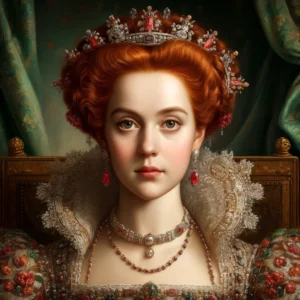
![]()
The Deadly Palette: Beyond Lead, Exploring Mercury in Royal Cosmetics
Now, let’s get moving. The Queen beckons us. During the Virgin Queen’s era, the highest standard for female beauty was smooth, blindingly white skin. Elizabeth I wore Venetian ceruse, a cosmetic made from white lead and vinegar, to achieve this look. She patted her face and neck with the substance, transforming her poxy skin– more on that later– into an eerie porcelain canvas that probably smelled like sour wine.
That’s certainly one way to maintain your virginity. Thanks to 400 years of science, we now know that applying lead to the face daily causes severe and often irreversible problems like hair loss and skin deterioration– and death by lead poisoning, which in the 16th century, was pretty damn final.
The Toxic Truth Behind the Tudor Red
It may have been for Queen Elizabeth, but lead wasn’t the only poison in her pigments. Let’s look at the other suspect. Snow White’s mom wished for more than a tiny ghost baby. She also wanted her to have lips as red as blood on winter roses. Made from cinnabar, a toxic mercury mineral, the RL queen’s lip stain gave her the signature red mouth that leaps out at you and all those creepy paintings.
So, we have two horrific poisons working in tandem through skin absorption over long periods. On the surface, the lead face slowly corroded the Queen’s skin. In response, Elizabeth wore thicker and thicker layers of makeup, reportedly layering makeup an inch thick toward the end of her life. Symptoms of mercury poisoning include memory loss, irritability, and depression, conditions Elizabeth reportedly experienced towards the end of her life.
Now, we’re getting warmer. In the Elizabethan era, nobles didn’t clean off their makeup nightly. Most modern women have been guilty of that at least a few times. After her maids carefully applied lead and mercury makeup to the royal face, Elizabeth wore it for at least a week. Forget about pore blockage; the lead soaked into her skin, causing it to turn gray and wrinkled.
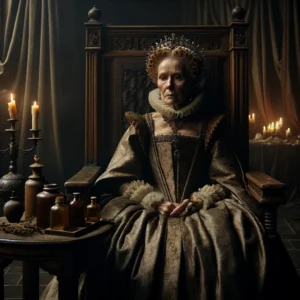
When Elizabeth finally had her makeup removed, historians suggest she might have used a gross concoction containing eggshells, alum, and– you guessed it– more mercury. Some claimed the mercury makeup remover left their skin soft, but that was only because it was skinning them alive one layer at a time.
As a teen, Queen Elizabeth didn’t wear quite so much lead face– not simply because she was a child, but because she hadn’t caught smallpox yet. On October 10th, 1562, she was struck with a high fever and displayed all the hallmarks of pox. Courtiers worried and worried that Elizabeth would die within the week, but the young royal survived.
Masking Scars and Securing Power: Elizabeth I Cosmetic Camouflage
Unfortunately, the disease left her with permanent scars in her terrible 20s, when life was either a bed of roses or a garbage fire. And scars don’t stack the odds against the latter. Smallpox scars were a common problem at the time. Hence, women are willing to wear vinegary lead faces. Elizabeth’s close friend, Mary Sidney, got stuck with them too.
As Henry Sidney, Mary’s husband, wrote, “the scars, to her resolute discomfort, ever since have done and do remain on her face.” Trying to survive in an atmosphere of constant bitchiness, Elizabeth did everything possible to cover up such blemishes and keep that virginity on lockdown, anything to avoid a husband who updates people on his wife’s pockmarks.
There haven’t been many female rulers in English history– let’s face it, in any history– a fact with which Elizabeth was all too familiar. She knew all eyes were on her and that any scarring on her face would mark her not as a survivor but as a pariah in those eyes. In 1586, a 50s-ish Elizabeth commented on the weight of these expectations while addressing parliament, “We princes, I tell you, are set on stages in the sight and view of all the world duly observed.
The Final Veil: Elizabeth’s Struggle with Age and Illness
Elizabeth’s battle against the ravages of time was fierce and lasted all her life. One of her wiser tricks was to wear a wig. Lord knows what lunacy would have been used to dye grays away back then. For a long time, it was basically like Shatner’s toupee– it existed but was never officially confirmed– until 1599, when the Earl of Essex blew that secret out of the water and immortalized it, expressing his shock upon beholding his elderly Queen’s mostly bald paté, with only a thin ring of hair
hanging about the ears. We can’t unsee that now. Thanks, Earl. In the last months of her life, Elizabeth refused to let doctors examine her. According to a court member, the Queen had fallen deeply melancholy. Still, Elizabeth refused to rest. She believed that if she lay down, she would never get up.
So Elizabeth stood for 15 hours straight, with her lady spreading pillows around the Queen for when she inevitably collapsed. On March 24th, 1603, Elizabeth I passed away. Possible causes of death include cancer or pneumonia, but Elizabeth’s use of lead and mercury-based makeup for decades in increasingly liberal doses certainly at least contributed to her declining health.
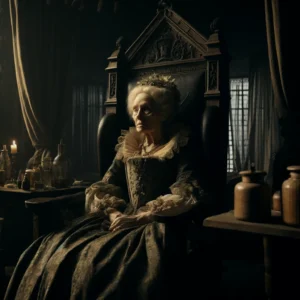
After a lifetime of lead and mercury poisoning, Elizabeth’s body was toxic. Elizabeth Southwell, one of the Queen’s ladies in waiting, claimed that Elizabeth’s body burst in her coffin at her wake due to the abundance of toxic vapors. Although Southwell’s account has often been dismissed as Jesuit propaganda of all things, exploding coffins aren’t unheard of, even today.
The phenomenon is called exploding casket syndrome, and it’s what happens when a corpse is sealed a bit too well. The coffin acts as a pressure cooker for all the gases and fluids produced by a decomposing body until– well, there’s a reason this got chalked up to bad religion. Here’s another horrible thing.
While Elizabeth certainly suffered the effects of lead and mercury poisoning, she may have died from blood poisoning. Just a week before she passed in 1603, Elizabeth’s doctors recommended a risky procedure. Elizabeth wore a coronation ring for 45 years since the day she was crowned. The ring began cutting into Elizabeth’s well-poisoned skin and, presumably, kept on cutting.
A Deadly Beauty:
Doctors warned her that the ring had to be surgically removed, and a week later, she died– and then exploded, depending on who you ask. Evidence of using lead for makeup dates back to at least the 5th century BCE. During the Roman Empire, women powdered their faces with lead. By the 16th century, the concoction was known as Venetian ceruse, or the spirits of Saturn– Queen Elizabeth’s favorite cosmetic.
I prefer a Mac. Unfortunately for her and every other ceruse fan in history, it wasn’t classified as a poison until 1634, less than 40 years after her death– which it had at least one hand in, if not both. People knew what caused hair loss and skin damage, but it took a long time for us to figure out that we were killing ourselves in the name of beauty.
In many ways, we still are. Like it or not, pain and death for beauty is an ancient and well-entrenched tradition, and it’s not done with us. So, what do you think about Queen Elizabeth’s makeup tutorial? Let us know in the comments,
Frequently Asked Questions
Did Elizabeth I ever marry? No, Elizabeth I chose to remain unmarried throughout her life. This strategic decision allowed her to maintain complete control over her political power and kingdom.
What were Elizabeth I’s major accomplishments? Elizabeth I’s reign saw major accomplishments such as the defeat of the Spanish Armada in 1588, the establishment of Protestantism in England, and the flourishing of the arts during the English Renaissance.
How did Elizabeth I impact the world beyond England? Elizabeth I’s support for seafaring explorers like Sir Francis Drake and Sir Walter Raleigh led to the expansion of British influence overseas, laying the groundwork for the later British Empire.
Was Elizabeth I ever in real danger of assassination? Yes, Elizabeth faced multiple assassination plots, most notably the Babington Plot, which led to the execution of Mary, Queen of Scots.
How did Elizabeth I manage her image? Elizabeth skillfully managed her image through portraiture, public appearances, and carefully crafted speeches, promoting herself as both a mother to her people and a divinely appointed monarch.
https://en.wikipedia.org/wiki/Elizabeth_I
https://uniquesaga.com/top-20-scariest-dolls-in-horror-movies/
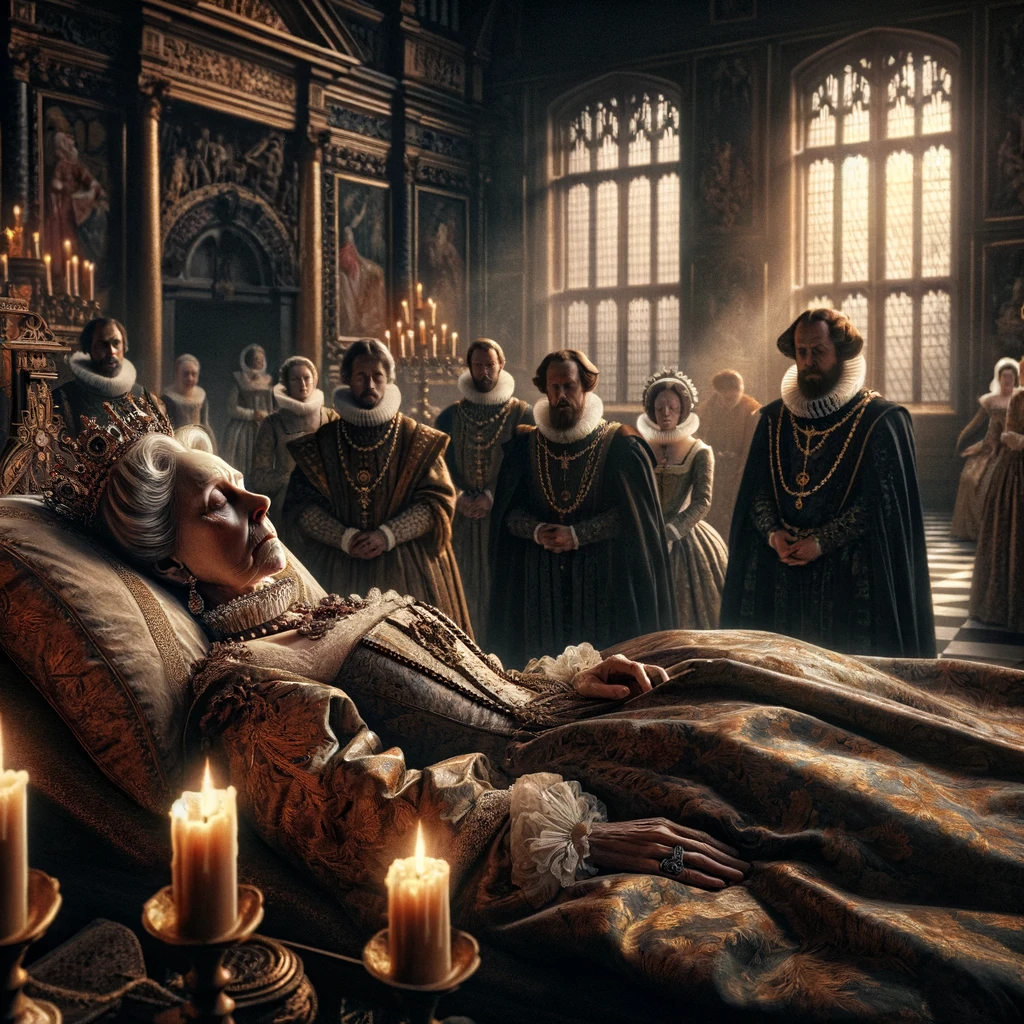





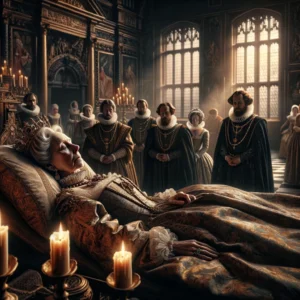
1 thought on “Elizabeth I | Biography ,Caused the Death of Elizabeth I”